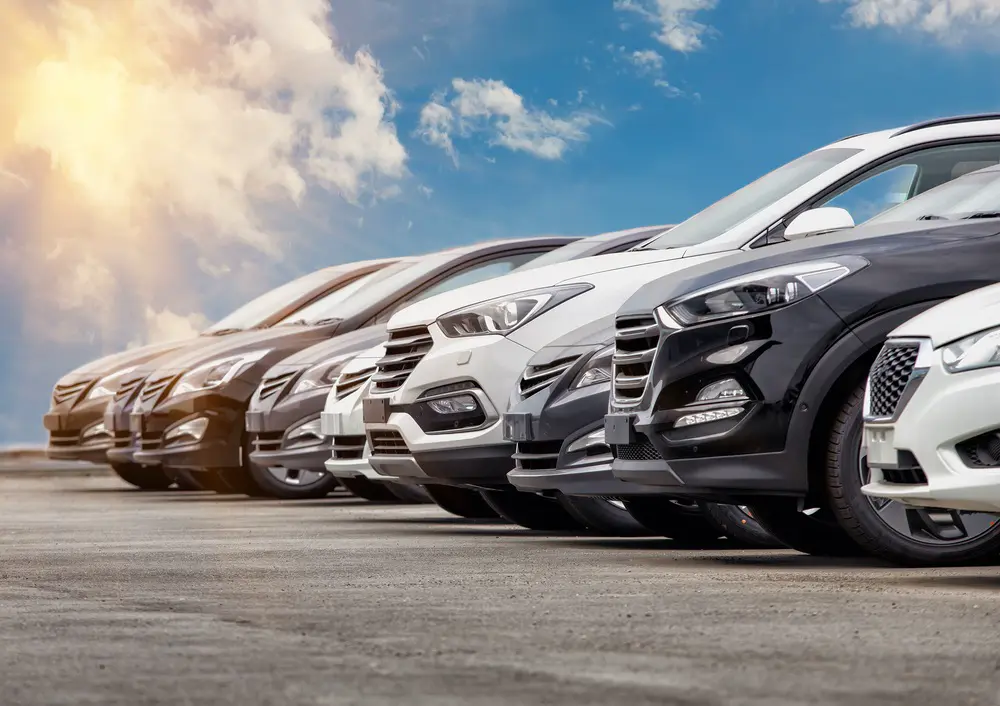
Just as important a decision of what camera to use as an investigator, is the choice on what vehicle to use for your surveillance.
Besides a red Ferrari, which could probably be debated, just about any vehicle could be used as a surveillance vehicle. We could have a debate about whether a Dodge Grand Caravan or a yellow Ford Mustang, but in reality, both could have their place. The location and situation are the biggest determination on what makes a good surveillance vehicle, but the goal here is to help break down some key components into selecting the right tool for the job.
A wise investigator once coined the phrase “anonymity through conformity.” As he put it “if everyone was driving a pink taco truck, then a pink taco truck would be the perfect surveillance vehicle.” Obviously, most people don’t drive pink taco trucks, but the sentiment still works. Coupe or sedan, truck or SUV, the vehicle choice needs to match the area you are working. Some vehicles blend better just because they are so non-descript and look like any other vehicle on the road, and some blend better because of just how many of that model of vehicle are ACTUALLY being driven.
After selecting the correct vehicle for your surveillance job, its important to focus on the little things that make a big difference in you being able to accomplish your task of staying on surveillance for an extended period of time. We all know that every assignment is different, and the time you are on site in your vehicle may only be a few minutes to a full day and beyond. The small little details about your vehicle are going to be the difference in just how long you can stay undetected over the course of the day, or multiple days if you are working the assignment again. Vanity license plate, bumper stickers, damage to the vehicle or the windshield, or aftermarket badges or wheels. All of these are little details that might not mean much at the start, but the longer you give someone the chance to see them, the more likely they are to notice or remember you. For example, a Chevrolet Trailblazer could be an ideal vehicle to use for surveillance, however, is you select the ‘SS’ model with the red badges and black rims, it becomes one of the most easily picked out vehicles on the road.
A sometimes-overlooked aspect of the vehicle though, is the vantage points the vehicle provides you when you are trying to film what is going on around you. With as many Dodge Challengers as there are on the road in some areas these days, the argument could be made that one of those could make a good vehicle selection. They have plenty of power to be able to follow almost anything on the road and depending on your color choice may blend in perfectly in an area. However, the inside is reasonably cramped and with the small windows and limited lines of sight that are common in muscle/sports cars, keeping yourself in position to continue to documenting activity could be a struggle. Going with a smaller SUV or even a minivan not only gives you more open space in the front and large windows to film through, it also gives you the possibility of utilizing the rear compartments of the vehicle thus giving you more concealment and the image that there is no one in the vehicle. The extra storage space for equipment, food, and water to survive the day is an added benefit.
At the end of the day, the surveillance vehicle you select needs to be one that fits you. You are going to be spending anywhere from 4 to 6, maybe even 8 or more hours than that at a time, sitting in the driver’s seat waiting on something to happen. If you cannot do that in the vehicle you select, it does not matter whether it meets all the prior criteria’s as have been talking about. Choose a vehicle that works for you in the area you need to be in, while remaining as anonymous as possible, and is comfortable enough to sit in all day. Oh – and having some tint on your windows is probably a sound strategy as well.